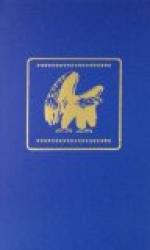FIGS FOR FIG LEAVES!
Of course, the writing of such a piece as 1601 raised the question of freedom of expression for the creative artist.
Although little discussed at that time, it was a question which intensely interested Mark, and for a fuller appreciation of Mark’s position one must keep in mind the year in which 1601 was written, 1876. There had been nothing like it before in American literature; there had appeared no Caldwells, no Faulkners, no Hemingways. Victorian England was gushing Tennyson. In the United States polite letters was a cult of the Brahmins of Boston, with William Dean Howells at the helm of the Atlantic. Louisa May Alcott published Little Women in 1868-69, and Little Men in 1871. In 1873 Mark Twain led the van of the debunkers, scraping the gilt off the lily in the Gilded Age.
In 1880 Mark took a few pot shots at license in Art and Literature in his Tramp Abroad, “I wonder why some things are? For instance, Art is allowed as much indecent license to-day as in earlier times—but the privileges of Literature in this respect have been sharply curtailed within the past eighty or ninety years. Fielding and Smollet could portray the beastliness of their day in the beastliest language; we have plenty of foul subjects to deal with in our day, but we are not allowed to approach them very near, even with nice and guarded forms of speech. But not so with Art. The brush may still deal freely with any subject; however revolting or indelicate. It makes a body ooze sarcasm at every pore, to go about Rome and Florence and see what this last generation has been doing with the statues. These works, which had stood in innocent nakedness for ages, are all fig-leaved now. Yes, every one of them. Nobody noticed their nakedness before, perhaps; nobody can help noticing it now, the fig-leaf makes it so conspicuous. But the comical thing about it all, is, that the fig-leaf is confined to cold and pallid marble, which would be still cold and unsuggestive without this sham and ostentatious symbol of modesty, whereas warm-blooded paintings which do really need it have in no case been furnished with it.
“At the door of the Ufizzi, in Florence, one is confronted by statues of a man and a woman, noseless, battered, black with accumulated grime—they hardly suggest human beings—yet these ridiculous creatures have been thoughtfully and conscientiously fig-leaved by this fastidious generation. You enter, and proceed to that most-visited little gallery that exists in the world.... and there, against the wall, without obstructing rag or leaf, you may look your fill upon the foulest, the vilest, the obscenest picture the world possesses—Titian’s Venus. It isn’t that she is naked and stretched out on a bed—no, it is the attitude of one of her arms and hand. If I ventured to describe the attitude, there would be a fine howl—but there the Venus lies, for anybody to gloat over that




